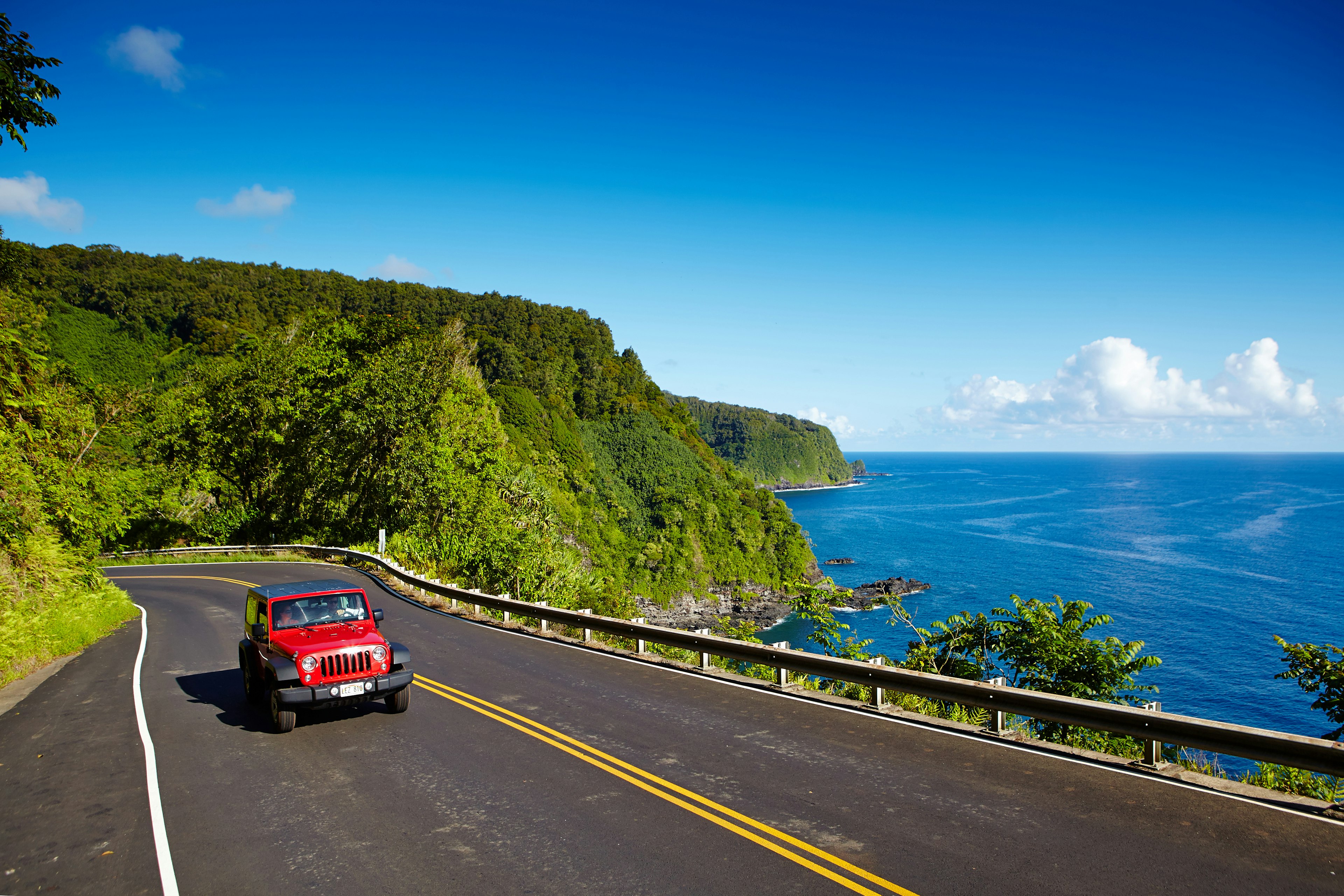There’s a saying in Hawaii: there’s a cost to paradise. Among the US states, Hawaii had the highest cost of living in 2022, according to the Missouri Economic Research and Information Center. The median price of a single-family home on Oʻahu is more than $1 million, and gas costs around $5 a gallon.
However, there are plenty of low-cost (and even free) ways to enjoy the best of the islands—pristine beaches, local flavors, and stunning natural beauty—which will allow you to stay for longer and experience more. This guide to daily costs in Hawaii, along with top tips for budget travelers, can help you save your dollars.
As of Nov 1, 2023, all areas of Maui (except Lahaina) affected by the devastating wildfires in August are open for tourism. Respectful travel is encouraged to support Hawaii’s local businesses that rely so heavily on tourism.

Plan a Fall or Spring Vacation
Hawaii is a year-round destination, making it an excellent choice for budget travelers. You can find deals on airfare and accommodations during the slower shoulder months—September and October, January and February, April and May—thus avoiding peak travel times like summer and winter vacations.
Be Smart About Island-Hopping
Why fly all the way to Hawaii and stay on one island? If you’re set on experiencing more than one island, consider cheaper options for interisland airfares.
Southwest Airlines offers one-way rates that can be as low as $39 with no-frills service and no assigned seating. Mokulele Airlines operates Cessna 208EX Grand Caravans that seat up to nine passengers and fly into smaller airports, offering round-trip fares for under $200 per person.
Planning tip: If you’re on Maui and want to visit Lanaʻi, you can catch a ride on the Expeditions Maui-Lanaʻi Passenger Ferry. Be aware, however, this business was severely impacted by the wildfires and is still rebuilding. Tickets start at $30 one way and take about an hour. Bonus: if you’re traveling between islands from January to April, you may spot humpback whales along the way.

Or Simply Stay on One Island
Island-hopping can be pricey—you’re paying for additional airfares and accommodations. Consequently, if you’re not on Oʻahu, you will likely need to rent a car, which can be costly depending on demand.
By staying on one island, you can immerse yourself in all it has to offer. Oʻahu is bustling, featuring numerous restaurants, shopping, beaches, museums, and hiking trails. Maui offers a similar vibrancy but with more country charm and quaint towns like Hana and Makawao.
Kauaʻi is the most laid-back among the islands, with verdant landscapes and stunning beaches offering a quieter pace. Hawaiʻi Island, also known as the Big Island, showcases active volcanoes, rolling ranchland, and an authentic old-Hawaii charm.
Keep Your Car-Rental Period Short
While renting a car for your entire stay might seem cost-effective, it can also be limiting—even on Oʻahu, which boasts a commendable public bus system. To truly explore different neighborhoods, find hole-in-the-wall eateries, and experience local life, it’s best to rent a car for just a few days, aiming to keep costs under $100.

Use Local Ridesharing Services and Rentals
All of the main islands have ridesharing services like Uber and Lyft, with Oʻahu featuring the best coverage. Moreover, new local services have emerged.
In June 2021, Holoholo launched on Oʻahu, Maui, Kauaʻi, Hawaiʻi Island, and Lanaʻi, offering a wider selection of rides—including hybrid and electric vehicles, as well as options for those requiring additional mobility assistance.
Fares are based on distance and calculated upfront, and rides can be scheduled in advance. Turo also entered the Hawaii market, offering the affordable option of renting vehicles directly from local owners.
Hui Car Share is a round-trip, station-based car-share program on Oʻahu, allowing you to book a vehicle by the hour or day, with gas, insurance, and roadside assistance included.
Take Public Transportation
For a worry-free way to explore the islands, consider utilizing public transportation.
Oʻahu features TheBus, a public service with a fleet of 542 buses operating daily across 101 routes. Adult fares are $3 (one way), with discounts for seniors and youth. TheBus conveniently connects to many popular visitor destinations, including Waikiki and Pearl Harbor.
Maui also has a public bus system servicing various parts of the island, ensuring accessibility for all.
Get Around by Bike
A fun and eco-friendly option for short trips, the only bikeshare program, Biki, on Oʻahu, has 1300 bikes at over 130 self-service Biki Stops throughout Honolulu. Rides cost $4.50 for a single ride of up to 30 minutes or $30 for unlimited rides within a 24-hour period, making it budget-friendly for vacationers.

There Are Fees for Some of Hawaii’s Beaches, Hiking Trails and Gardens
Enjoy Hawaii’s amazing beaches, gardens, parks, and hiking trails without overspending. Most beaches are free and accessible year-round, but some require reservations for a small fee. For instance, Hanauma Bay on Oʻahu and Hāʻena State Park on Kauaʻi both have entry fees and reservation systems.
State-run hiking trails generally allow free access, but some have small fees. For instance, there’s a $5 fee for non-residents to hike to the top of Diamond Head (Lēʻahi), along with a parking fee. It’s advisable to secure your place in advance online for various attractions to prevent hassle.
Eat Affordable Local Dishes: Bento Boxes and Poke Bowls
Despite the existence of upscale restaurants, Hawaii’s local cuisine is equally celebrated for its affordability. Options like plate lunches, bento (Japanese box meals), and poke bowls (cubed ahi on rice) are plentiful.
Seek out drive-ins like Rainbow Drive-In on Oʻahu and Hawaiian Style Cafe on Hawaii Island for delicious yet affordable meals. Additionally, okazu-ya eateries offering a la carte local favorites are hidden gems worth exploring.
Planning tip: If your rental comes with a kitchen, consider cooking. Visit farmers markets for local produce and artisan-made gifts, ensuring a taste of Hawaii at home.
Find Free and Low-Cost Activities and Tours
Immerse yourself in Hawaii’s culture through free or affordable classes. Many hotels and malls offer cultural practices such as lei-making and hula. The Royal Hawaiian Center hosts free Hawaiian entertainment and classes.
For a small fee, self-guided tours can be very economical. Consider a walking tour of Oʻahu’s historic Chinatown to learn about the rich history of the neighborhood.
A Guide to Daily Costs in Hawaii
Hostel room: $40 to $150 a night
Basic room for two: $150 to $300 a night
Self-catering apartment: $80 (private room) to $6000 a night
Public transport ticket: $3 one way (adult) on TheBus
Coffee: $2.25 (hot coffee) to $12.50 (premium Kona coffee)
Sandwich: $7 to $13
Dinner for two: $50 to $500
Beer/pint at the bar: $7 to $12
This article was first published Apr 1, 2016 and updated Nov 11, 2023.




